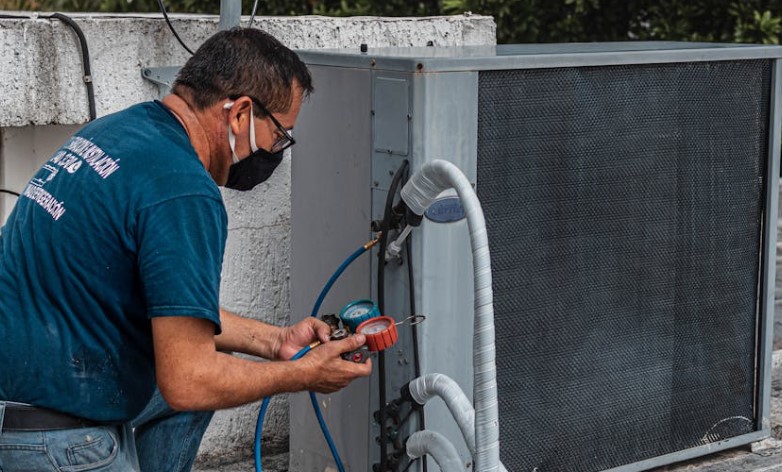In today’s corporate world, ensuring a healthy work environment is paramount for employee well-being and productivity. One critical aspect often overlooked is air quality management within office settings.
Poor air quality can lead to a myriad of health issues, reduced employee satisfaction, and decreased productivity.
This blog post delves into the importance of air quality management in corporate environments and outlines strategies for maintaining clean, healthy air to foster a conducive work setting.
The Significance of Air Quality in Workspaces
Air quality within corporate environments directly impacts employee health, comfort, and overall workplace satisfaction. Contaminants like dust, mold, volatile organic compounds (VOCs), and carbon monoxide can deteriorate indoor air quality, leading to respiratory issues, allergies, and even long-term health conditions. Furthermore, good air quality is not only essential for physical health but also for mental clarity, concentration, and employee morale.
Assessing Air Quality
The first step towards improving air quality is conducting a comprehensive assessment. Businesses should consider regular air quality testing to identify potential pollutants and their sources within the office space. This assessment could include monitoring levels of carbon dioxide (CO2), VOCs, particulate matter, and humidity. Understanding the current state of your workplace’s air quality is essential for implementing effective management strategies.
Enhancing Ventilation Systems
Improving ventilation is a crucial strategy for managing air quality. Ensuring that HVAC systems are adequately maintained and upgraded when necessary can significantly enhance air circulation and filtration, reducing pollutant levels. Investing in high-efficiency air filters and ensuring that air vents are not obstructed can also contribute to better indoor air quality. Additionally, incorporating natural ventilation by opening windows, where possible, can further improve air circulation.
Reducing Sources of Pollution
Identifying and minimizing sources of indoor air pollution is fundamental to air quality management. This can involve switching to eco-friendly cleaning products to reduce the presence of harmful chemicals, managing dust through regular cleaning, and ensuring that office equipment is properly maintained to prevent emissions. Additionally, implementing a no-smoking policy within and around the corporate premises can significantly reduce air quality hazards.
Embracing Greenery
Incorporating indoor plants into office design is a natural and effective way to improve air quality. Certain plants are known for their air-purifying qualities, capable of absorbing pollutants like benzene, formaldehyde, and trichloroethylene. Besides purifying the air, plants can enhance the aesthetic appeal of the workspace, boost employee morale, and reduce stress levels.
Promoting a Healthy Lifestyle
Encouraging a healthy lifestyle among employees can indirectly contribute to better air quality management. Initiatives such as promoting active commuting can reduce pollution from vehicles. Similarly, providing facilities for cyclists or incentives for using public transportation can decrease the number of pollutants employees bring into the office environment from outside.
Continuous Monitoring and Education
Maintaining optimal air quality requires ongoing effort and awareness. Implementing air quality monitoring devices can provide real-time data, allowing for immediate action when pollutant levels rise. Educating employees about the importance of air quality and how they can contribute to its improvement is also vital. Awareness campaigns, workshops, and informational materials can encourage employees to participate actively in creating a healthier workplace.
Creating an Air Quality Management Plan
Developing a comprehensive air quality plan must consider equipment and utilities impacting the office environment. Regular furnace maintenance is crucial, especially in areas like Salt Lake City with extreme temperatures. A well-maintained furnace enhances efficiency and prevents the circulation of pollutants, benefiting workforce well-being and productivity. Professional services for regular checks can help maintain indoor air quality.
Conclusion
Corporate air quality management is a multifaceted challenge that requires proactive strategies and continuous commitment. By assessing air quality, enhancing ventilation, reducing pollution sources, embracing greenery, and promoting healthy lifestyles, businesses can significantly improve the air quality in their workspaces.
Furthermore, continuous monitoring, employee education, and a structured management plan are essential for sustaining these efforts. In prioritizing air quality, companies invest in their most valuable asset— their employees—ensuring a healthier, more productive, and more satisfying work environment.
Breathing easy in the workplace is not just a luxury; it’s a necessity for the well-being and success of both employees and the organization as a whole.





